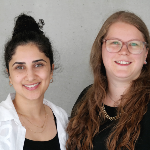Process Systems Engineering
Postdoctoral Researchers
Data Analytics in Engineering
Phone:
+49 711 685 66288
Graphical Interactive Systems
Postdoctoral Researcher
Phone:
+49 711 685 60027
Postdoctoral Researcher
Postdoctoral Researcher
Postdoctoral Researcher
Postdoc Spokesperson I Postdoctoral Researcher
Phone:
+49 711 685 61763
Applied Mathematics
Postdoctoral Researcher
Phone:
+49 711 685 60074
Postdoctoral Researcher
Phone:
+49 711 685 66111
Postdoctoral Researcher
Phone:
+49 711 685 88409
Postdoctoral Researcher
Phone:
+49 711 685 64413
Contact

Graduate Academy
[Image: SimTech/Tabea Siegle]














